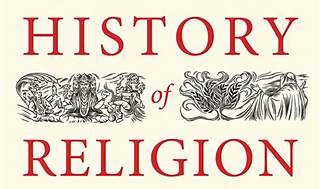
“A Little History of Religion” by Richard Holloway provides a rich and colorful exploration of religious beliefs from humanity’s earliest days to the present. Let’s delve into the key elements:
Main Characters:
The book does not follow specific characters, as it is more of a historical overview. However, the central figures are the various religious leaders, thinkers, and followers throughout history. Their motivations vary widely, from seeking spiritual enlightenment to wielding power and influence.
Plot:
The central conflict revolves around the evolution of religious belief. Holloway traces the development of different faiths, their clashes, and their impact on societies. The story unfolds chronologically, covering ancient polytheistic religions, the rise of monotheism, and the spread of Buddhism, Christianity, Islam, and Hinduism. The conflict lies in how these diverse belief systems intersect, compete, and sometimes clash.
The resolution is not a neat one; instead, it reflects the ongoing tension between religious traditions, secularism, and the quest for meaning. Holloway emphasizes nuance and mystery, urging readers to approach faith with curiosity and tolerance.
Setting:
The book spans various historical periods and global locations. It begins with prehistoric animism and progresses through ancient Egypt, Mesopotamia, Greece, Rome, and beyond. The setting influences religious practices, rituals, and the way people perceive the divine. For instance, the Egyptian pantheon shaped their art, architecture, and daily life, while the Roman Empire’s religious syncretism impacted early Christianity.
Themes:
Several underlying themes emerge:
- Diversity of Belief: Holloway celebrates the richness of religious diversity, acknowledging that different paths can lead to spiritual fulfillment.
- Search for Meaning: Throughout history, humans have sought answers to existential questions. Religion provides a framework for understanding life, death, and purpose.
- Religious Violence: The book grapples with the dark side of faith—the wars, persecutions, and conflicts fueled by religious differences.
- Secularism vs. Faith: Holloway discusses the tension between secularism and religious fervor, highlighting moments when these forces collide.
- Evolution of Doctrine: The novel explores how religious ideas evolve over time, adapting to cultural shifts and scientific discoveries.
Conclusion:
“A Little History of Religion” reminds us that faith is complex, multifaceted, and deeply ingrained in human experience. Holloway encourages readers to engage with religious ideas critically, appreciating their value while remaining open to dialogue and understanding.
In summary, this book offers an antidote to rigid religious attitudes, emphasizing curiosity, tolerance, and the enduring significance of faith across millennia. Whether you have faith or not, Holloway’s historical journey invites reflection and appreciation for the diverse tapestry of human spirituality.
Also read
A Little History of the World: A Journey through Time


